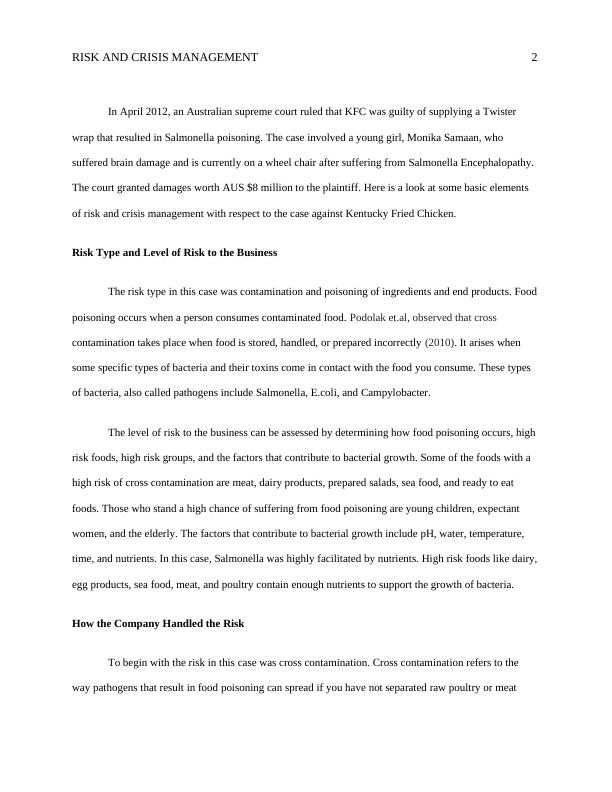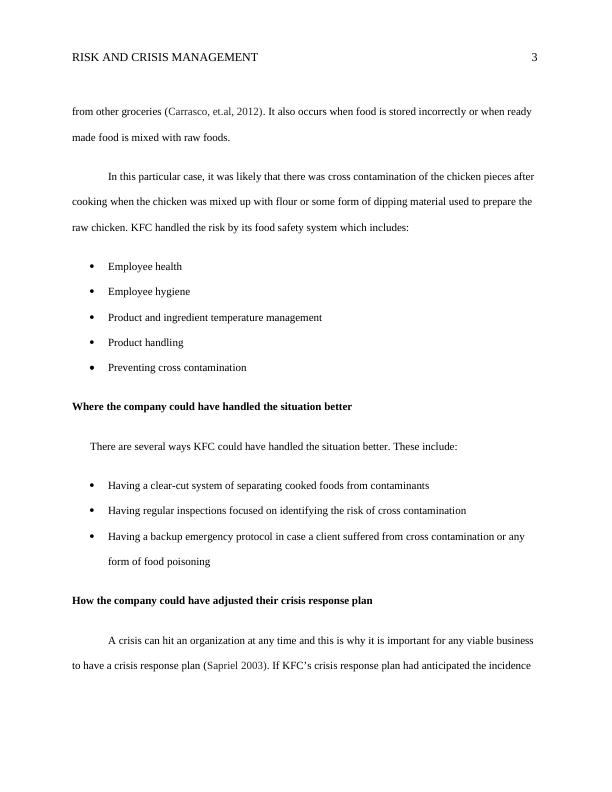Risk and Crisis Management
Critically assess the risk and crisis management performance of Hospitality and Tourism organisations
6 Pages1458 Words38 Views
Added on 2023-03-17
About This Document
This article discusses the case against KFC for Salmonella poisoning and explores the elements of risk and crisis management. It examines the types of risks involved, how the company handled the risk, and suggests improvements for future crisis response plans.
Risk and Crisis Management
Critically assess the risk and crisis management performance of Hospitality and Tourism organisations
Added on 2023-03-17
ShareRelated Documents
End of preview
Want to access all the pages? Upload your documents or become a member.
Food Poisoning : Assignment
|1
|1848
|66
Controlling Food Contamination and Food-borne Illness
|12
|811
|58
MICROBIOLOGY 14 14 MICROBIOLOGY Control of Staphylococcus aureus in food industry
|18
|5964
|205
Controls for Preventing Food Contamination
|20
|743
|24
Campylobacter Jejuni: A Brief Overview on Pathogenicity-Associated Factors and Disease-Mediating Mechanisms
|9
|2535
|175
RCM 301 : risk and crisis management
|7
|1310
|36



